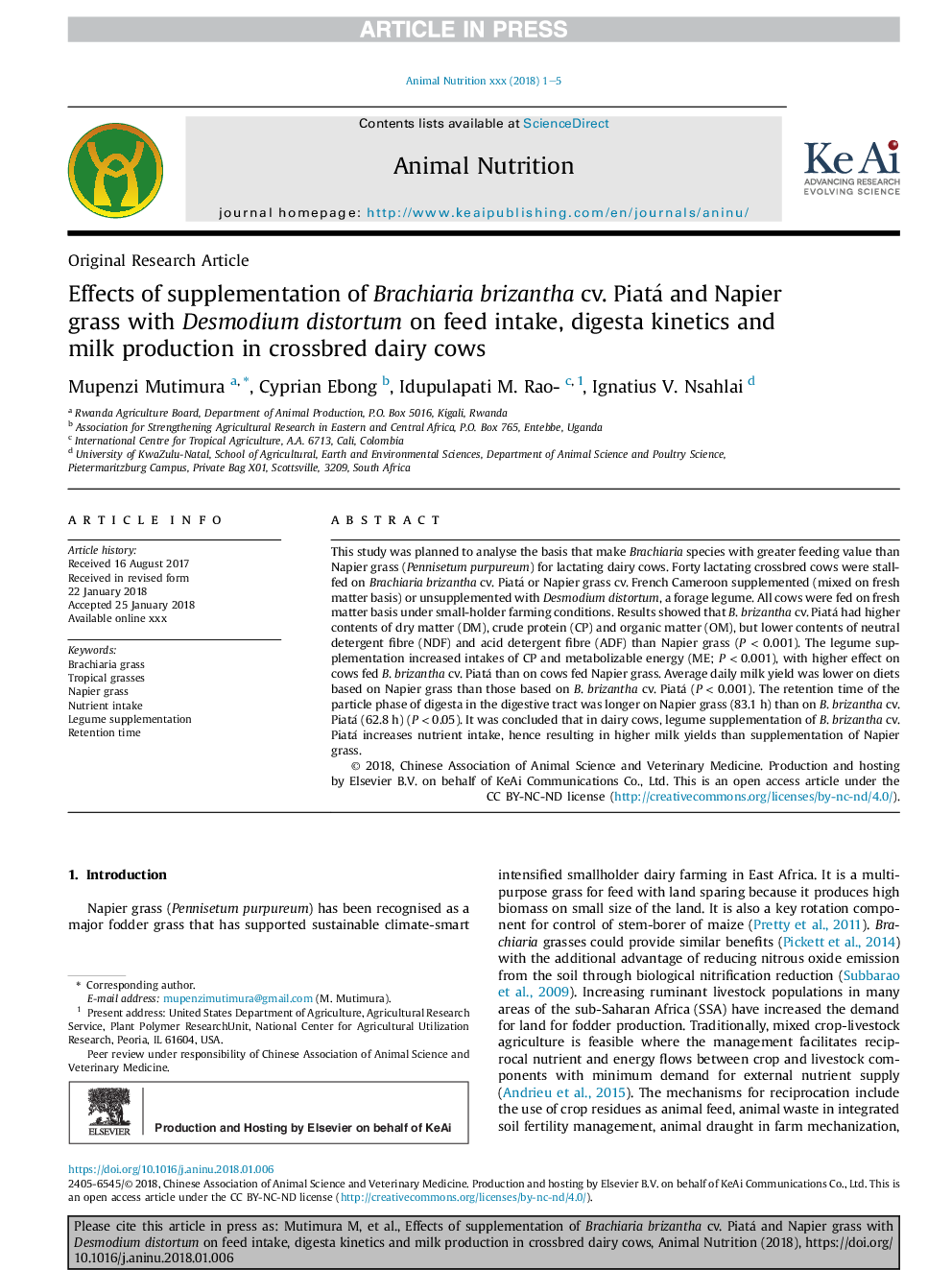| Article ID | Journal | Published Year | Pages | File Type |
|---|---|---|---|---|
| 8882513 | Animal Nutrition | 2018 | 5 Pages |
Abstract
This study was planned to analyse the basis that make Brachiaria species with greater feeding value than Napier grass (Pennisetum purpureum) for lactating dairy cows. Forty lactating crossbred cows were stall-fed on Brachiariabrizantha cv. Piatá or Napier grass cv. French Cameroon supplemented (mixed on fresh matter basis) or unsupplemented with Desmodium distortum, a forage legume. All cows were fed on fresh matter basis under small-holder farming conditions. Results showed that B. brizantha cv. Piatá had higher contents of dry matter (DM), crude protein (CP) and organic matter (OM), but lower contents of neutral detergent fibre (NDF) and acid detergent fibre (ADF) than Napier grass (PÂ <Â 0.001). The legume supplementation increased intakes of CP and metabolizable energy (ME; PÂ <Â 0.001), with higher effect on cows fed B. brizantha cv. Piatá than on cows fed Napier grass. Average daily milk yield was lower on diets based on Napier grass than those based on B. brizantha cv. Piatá (PÂ <Â 0.001). The retention time of the particle phase of digesta in the digestive tract was longer on Napier grass (83.1Â h) than on B. brizantha cv. Piatá (62.8Â h)Â (PÂ <Â 0.05). It was concluded that in dairy cows, legume supplementation of B. brizantha cv. Piatá increases nutrient intake, hence resulting in higher milk yields than supplementation of Napier grass.
Related Topics
Life Sciences
Agricultural and Biological Sciences
Animal Science and Zoology
Authors
Mupenzi Mutimura, Cyprian Ebong, Idupulapati M. Rao, Ignatius V. Nsahlai,
